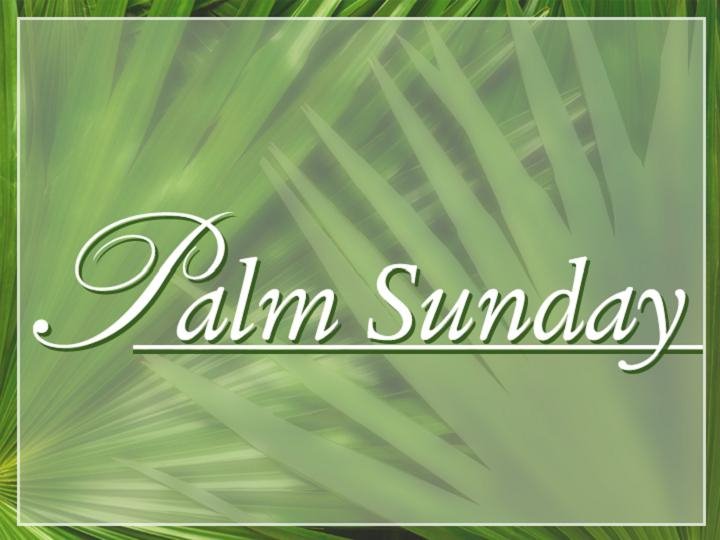Christians all over the world are observing today as Palm or Passion Sunday. It commemorates the triumphal entry of Jesus Christ into Jerusalem, culminating into his passion, death and resurrection.
Palm Sunday, which is a movable Christian feast and falls on the sixth or last Sunday before Easter, also marks the commencement of the Holy week. On palm Sunday, as the name implies, palm fronds normally play significant role during Church services as worshipers use palm fronds or branches in praising the Lord, singing Hosanna in the highest, depicting the kingship and supremacy of Jesus Christ.
In the accounts of the four canonical Gospels, Jesus’ triumphal entry into Jerusalem took place in the days before the last supper, marking the beginning of His passion. At that time, crowd gathered around Jesus and believed in Him as recorded in John chapter 12, verses 9 to 11, after He raised Lazarus from the dead. The next day, the multitude gathered for the feast in Jerusalem and welcomed Jesus as he entered Jerusalem.
Traditionally, entering the city on a donkey symbolizes arrival in peace, rather than as a war-waging king arriving on a horse. Another symbolic thing is Jesus’ visit to the home of an unknown woman of Bethany, where she anointed His head with precious oil, in forecast of His burial.
Notably, Palm Sunday is celebrated in most liturgical churches by the blessing and distribution of palm branches or the branches of other native trees representing the palm branches the crowd scattered in front of Christ as he rode into Jerusalem. The difficulty in procuring palm fronds in difficult climates led to their substitution with branches of native trees.
On the other hand, the symbolism of the donkey on which Jesus rode, may also refer to the eastern tradition that it is an animal of peace versus the horse, which is an animal of war. Therefore, a king came, riding upon a hose when he was bent on war and rode upon a Donkey when he wanted to point out that he was coming in peace.
Therefore, Jesus entry to Jerusalem symbolized His entry as the Prince of Peace, not as a war-mongering King, so as we begin this Holy Week on the heels of Palm Sunday, may we constantly be reminded of its significance and value for our lives today, that important day in history, when Jesus began His journey towards the cross.
His word, for instance, reveals such great truths in every part of the story. Finally, we should realize that the palm branch, which Jesus rode on, represent goodness and victory and was symbolic of the final victory He would soon fulfill over death.
On the other hand, the donkey he rode on symbolized peace. Jesus reminds us that He is the Prince of Peace. Also, although the people wanted earthly king when they shouted Hosanna, God has a different way in mind of bringing true salvation to all who would trust in Him.
Palm Sunday reminds us that the reign of Christ is far greater than any the mind of man could ever conceive or plan. Man looked for someone to fight his battles in the present world. Yet, God had the ultimate plan of sending His son to fight the final battle over death.
This is the greatness of why we celebrate this week. Because of Christ’s ultimate sacrifice, we can be set free from death. Thus, we have so much to be grateful to God for this week.
The enemy knows that, and you can bet, he is going to do everything he can to try and distract us from the true meaning of what this Holy Week means. Do not therefore let him win.
In this Holy week, may God direct our thoughts and attention towards what matters most, Jesus Christ our King, let us choose to focus on worshiping the Lord, thanking Him for the gift of His sacrifice, celebrating the power of Resurrection, and the new life found in Him alone. May the peace of the Lord which passes all human understanding continue to be with us now and forever more-Amen.









Comments are closed for this post.